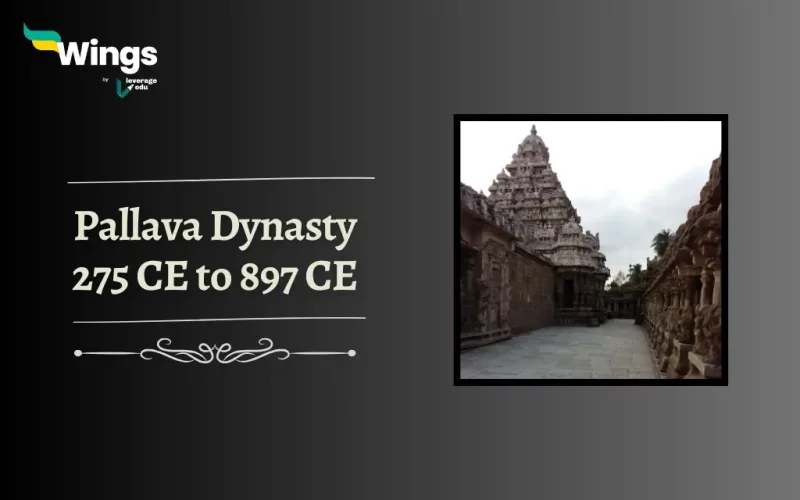In the heart of South India’s rich history, a dynasty that left a significant mark on the region was the Pallava Dynasty. The Pallavas spanned from the 3rd to the 9th century CE, known for their architectural marvels, maritime power, and vibrant cultural contributions, Let’s delve into the world of this rich dynasty.
What was the Origin of Pallavas?
The Pallavas were originally a minor clan, but they rose to power in Tamil Nadu. Their first great king was Simhavishnu, who defeated the Kalabhras, a rival dynasty. Additionally, Simhavishnu’s son, Mahendravarman I, was a great patron of the arts, coin designs, and architecture. He built many temples and monuments.
Consequently, they reached the height of their power under Mahendravarman’s successor, Narasimhavarman I. In addition, Narasimhavarman defeated the Chalukyas, a powerful dynasty from the north, and he extended the empire to its greatest extent. The dynasty declined in the 9th century, and they were eventually overthrown by the Cholas. However, they left a lasting legacy in South India.
Also Read: The Vijaynagar Empire (1336-1647) AD – UPSC Notes and Pointers
Who were the Famous Kings of Pallavas?
Some of the great kings of the Pallava dynasty were:
1. Simhavishnu (3rd Century CE): Simhavishnu is credited as the first significant ruler and the founder of the Pallava Dynasty. His victory over the Kalabhras marked the dynasty’s entry into the political landscape of Tamil Nadu. Moreover, Simhavishnu was not only a military strategist but also a patron of the arts, hence contributing to coin designs and architecture.
2. Mahendravarman I (6th Century CE): The son of Simhavishnu, Mahendravarman I, continued the dynasty’s legacy as a patron of the arts. He is renowned for constructing temples and monuments, including the iconic Shore Temple at Mahabalipuram.
3. Narasimhavarman I (7th Century CE): Narasimhavarman I’s reign marked the zenith of Pallava power. He defeated the formidable Chalukya dynasty from the north and expanded the Pallava empire to its greatest extent. Additionally, his military achievements and territorial expansions were remarkable during this period.
There were other kings, Nandivarman II, Dantivarman and Nandivarman III who also ruled during the Pallava Dynasty.
Also Read: Pandyas: History, Rulers, Contributions
Architectural Achievements of the Pallavas
The rulers constructed many temples and monuments, which are some of the finest examples of Dravidian architecture. Their architecture was not confined to temples alone. The monolithic rock-cut temples of Mahabalipuram are a marvel of engineering and artistry.
Some of the most famous temples include:
- The Mamallapuram, also known as Mahabalipuram, is a UNESCO World Heritage site that showcases its architectural finesse. The Arjuna’s Penance, a massive bas-relief, narrates tales from the Mahabharata and showcases the Pallava’s mastery over stone. The descent of the Ganges is another example.
- The Shore Temple at Mahabalipuram: This temple is dedicated to Vishnu and Shiva. It is one of the earliest examples of Dravidian architecture.
- The Five Rathas at Mahabalipuram: These are five monolithic temples that are carved out of a single rock. They are dedicated to different gods and goddesses. Moreover, some believe they are named after the 5 Pandavas from Mahabharata.
- The Kailasanatha Temple at Kanchipuram: This temple is dedicated to Shiva. It is the largest and most impressive temple.
- The Vaikuntha Perumal Temple at Kanchipuram: This temple is dedicated to Vishnu. It is one of the oldest and most important Vishnu temples in South India.
Thus, these monuments serve as a testament to the ability of the empire to shape stone into ethereal forms.
Also Read: Tribes of India: The Ancient People and Their Culture
Maritime Achievements of Pallavas
The Pallava kings were not just builders of stone, they were also masters of the sea. Their maritime expeditions extended their influence far beyond the Indian subcontinent. Additionally, they were known for their naval strength, which thus allowed them to maintain trade links with Southeast Asia and even as far as China.
Furthermore, this maritime connection promoted the exchange of culture, art, and ideas, enriching the legacy of the Pallava Dynasty.
Also Read: Types of Sculptures
The Pallavas’ Cultural Impact
The kings were not only builders and sailors but also patrons of art and culture. Their contributions to literature, particularly in the form of Sanskrit and Tamil poetry, remain celebrated. The famous Pallava script, known as Grantha, played a pivotal role in the dissemination of knowledge and culture.
In the realm of dance and music, they fostered the growth of classical forms, laying the foundations for what would become Bharatanatyam, one of India’s classical dance forms.
The Legacy of Pallavas
The Pallava dynasty left a lasting legacy in South India. Their temples and sculptures are some of the finest examples of Dravidian art and architecture. The rulers also played a significant role in the political and cultural history of the region. Thus, their legacy continues to be celebrated by people all over the world.
Quiz
Results
#1. Which dynasty ruler built the Shore Temple at Mahabalipuram?
#2. Who among the following Pallava rulers built the Vaikuntaperumal temple?
#3. Who are the Five Rathas or Pancha Rathas attributed to?
FAQs
The founder of the Pallavas dynasty was Simhavishnu (3rd Century CE).
The Pallavas came first and were overthrown by the Cholas.
The Pallavas spoke Tamil, Sanskrit and Prakrit.
Relevant Blogs
| Sunga Dynasty | Hoysala Dynasty |
| Yadava Dynasty | Kushan Dynasty |
| Satavahana Dynasty | Kakatiya Dynasty |
| Slave Dynasty | Tughlaq Dynasty |
| Gurjara-Pratihara Dynasty | Haryanka Dynasty |
That’s all about the Pallava Dynasty! If you want to read more articles like this, you can get Study notes on the Modern History of India here. Also, you can visit our general knowledge page on Indian History!
 One app for all your study abroad needs
One app for all your study abroad needs
















